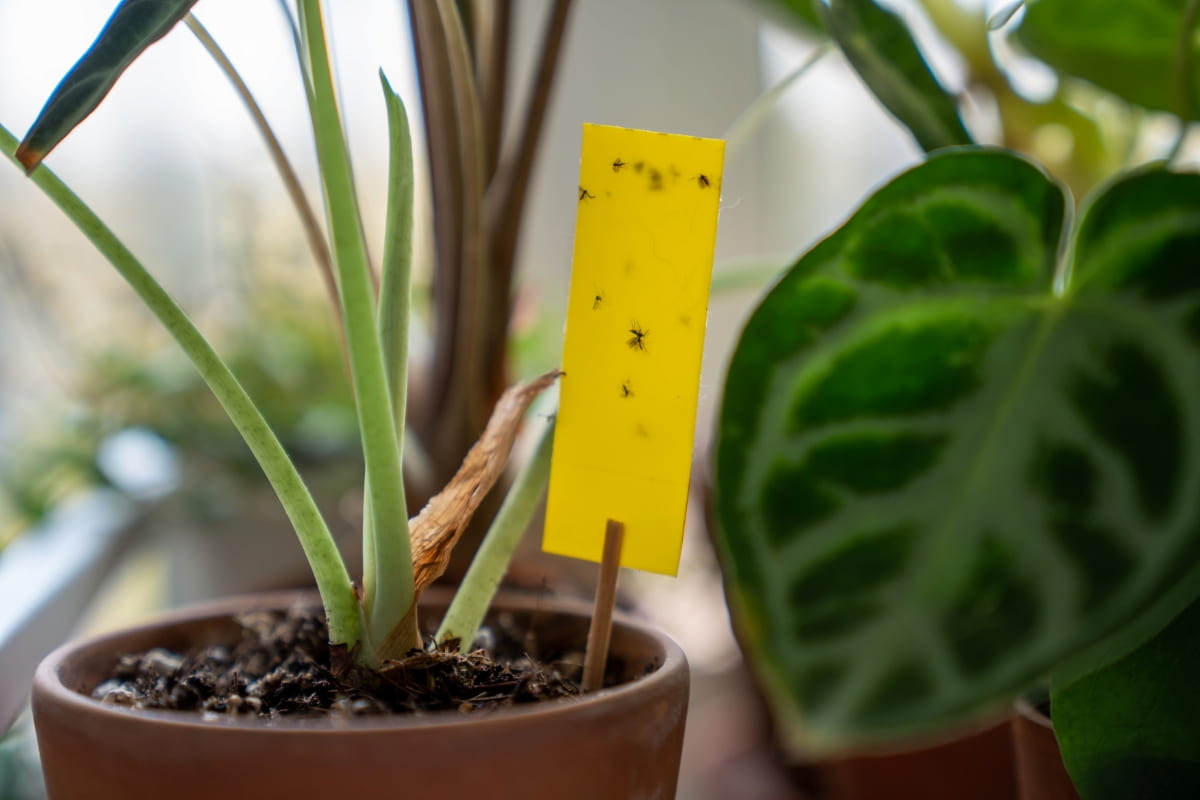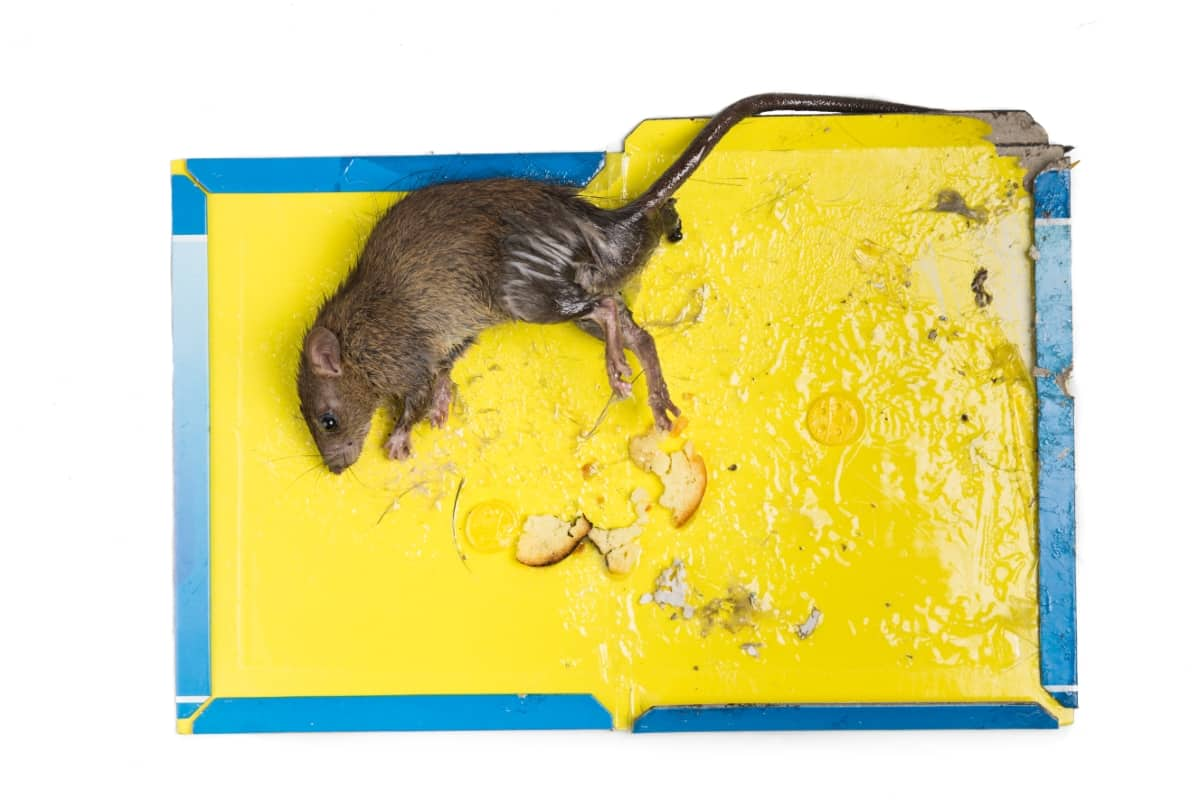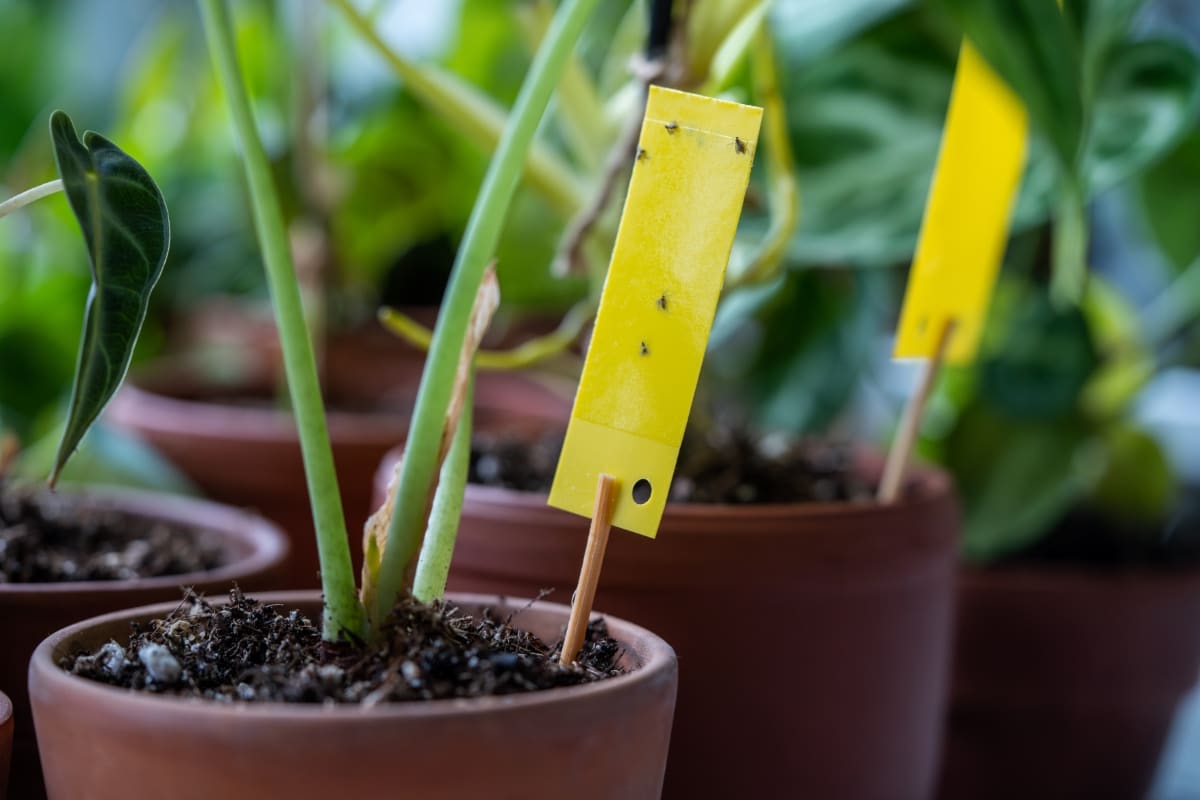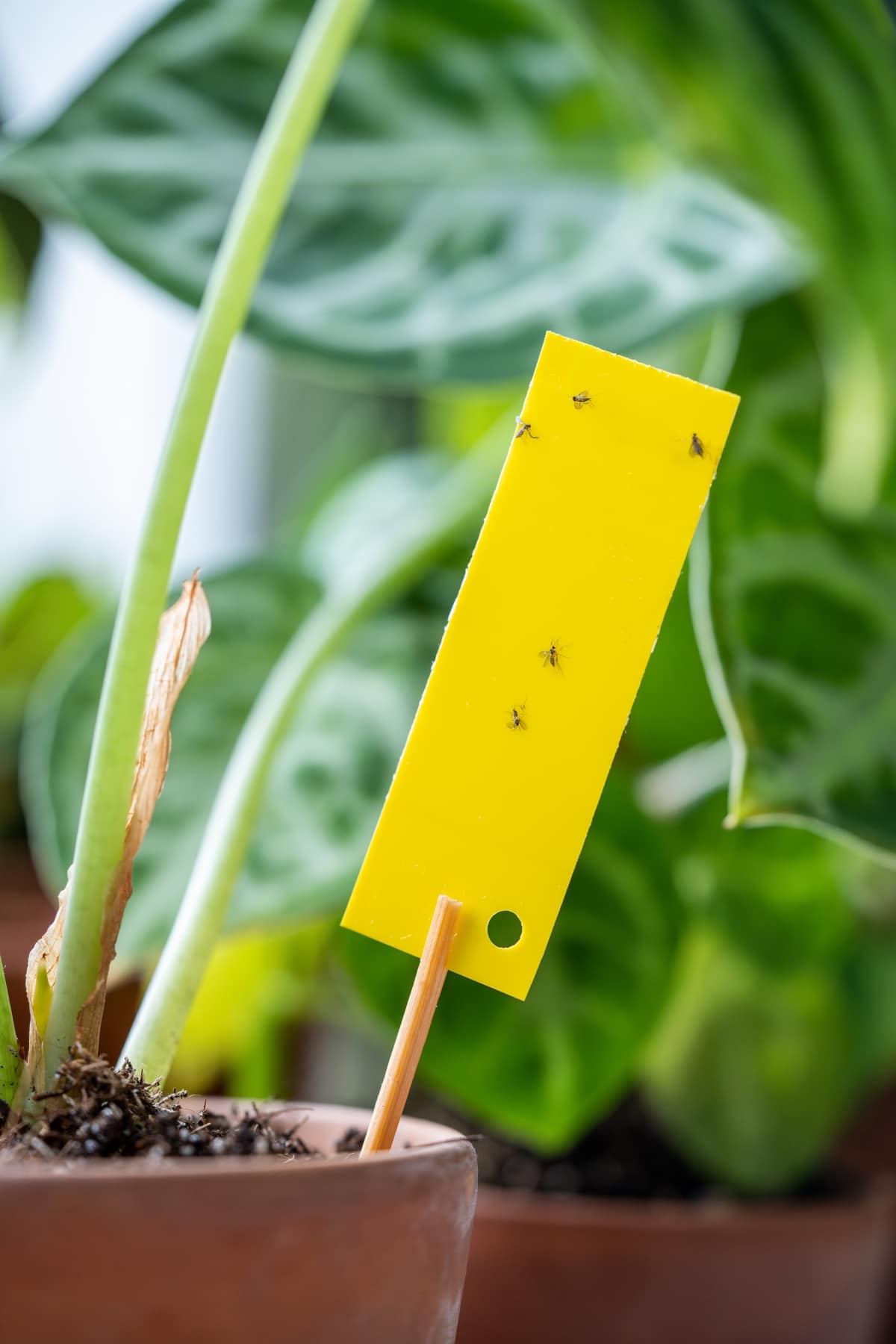Sticky traps are adhesive surfaces designed to capture and monitor pests such as insects and rodents. They are typically made of cardboard or plastic coated with a sticky material that traps pests upon contact. These traps are available in various sizes and shapes, often resembling boards or strips.
Introduction to Sticky Trap Pest Control
Benefits of Using Sticky Traps for Pest Control
Sticky trap pest control offers several advantages in pest management. Firstly, they are non-toxic and safe for use in homes, businesses, and agricultural settings. Additionally, they provide an effective means of monitoring pest populations, aiding in early detection and intervention. Furthermore, sticky traps are simple to use, require minimal maintenance, and are cost-effective compared to chemical pesticides. They also offer a targeted approach, minimizing harm to non-target organisms and reducing environmental impact.

Types of Sticky Traps
Flypaper: For Flying Insects
As one of the best sticky traps for insects, flypaper traps are specifically designed to catch flying insects such as flies, mosquitoes, and fruit flies. They consist of strips of paper or plastic coated with a sticky adhesive. When insects come into contact with the adhesive, they become stuck, preventing them from flying away. Flypaper traps are commonly used in homes, restaurants, and outdoor spaces to control flying insect populations effectively.
Glue Boards: For Rodents and Crawling Insects
Glue boards, also known as sticky traps or adhesive traps, are versatile devices used to capture rodents and crawling insects like cockroaches, spiders, and scorpions. These glue traps for rodents are typically made of cardboard, plastic, or wood with a layer of strong adhesive on one side. When pests walk or crawl onto the board, they get stuck to the adhesive surface, immobilizing them. Glue boards are commonly placed along walls, baseboards, and in areas where pests are likely to travel, providing an effective method of pest control without the use of chemicals.
Specialty Traps: For Specific Pests
Specialty traps are designed to target specific pests, offering tailored solutions for unique infestation challenges. These traps may include pheromone traps for attracting and capturing specific insect species, such as pantry moths or beetles. They can also include traps designed for specific locations or situations, such as traps for monitoring bed bug activity in hotels or traps for capturing wasps and hornets outdoors. Specialty traps offer precision in pest control efforts, allowing for targeted management of specific pest species or infestation scenarios.
Identifying Target Pests
Common Household Pests
Common household pests include insects such as ants, cockroaches, bed bugs, and spiders. These pests can infest homes, causing damage to property, spreading diseases, and triggering allergies. Rodents like mice and rats are prevalent household pests, capable of causing structural damage and contaminating food supplies. Additionally, nuisance pests like flies, mosquitoes, and fleas can be a persistent problem, especially during warmer months.
Signs of Infestation
Signs of pest infestation vary depending on the type of pest but often include visible sightings of pests or their droppings. For insects like ants and cockroaches, trails of live or dead bugs may be observed near food sources or in dark, moist areas. Chew marks on food packaging or structural materials indicate rodent activity, along with droppings and gnawed items. Bed bug infestations may be detected by blood stains on bedding or furniture and itchy bite marks on the skin.
Placement of Sticky Traps
Strategic Locations for Flying Insects: Sticky Trap Placement Tips
Place flypaper traps near windows, doors, and light sources where flying insects are likely to enter. Hang them vertically or horizontally to intercept pests’ flight paths effectively. In kitchens, position indoor sticky insect traps near food preparation areas and garbage bins. For Outdoor glue trap solutions, place traps on patios, near outdoor lights, or around garbage receptacles to capture flying pests before they enter the home.
Ground Placement for Crawlers and Rodents
Position glue boards along walls, baseboards, and corners where crawling insects and rodents travel. Place them near potential entry points, such as gaps around pipes, vents, and doors. For rodents, place traps perpendicular to walls or along known rodent runways to increase effectiveness. In kitchens and storage areas, place traps under sinks, behind appliances, and in cabinets to intercept pests.
Tips for Maximizing Effectiveness: How to Use Sticky Traps Effectively
- Regularly inspect and replace traps as needed to maintain effectiveness.
- Avoid placing traps in areas with excessive dust, moisture, or airflow, as this can reduce adhesive strength.
- Use multiple traps in heavily infested areas for better coverage.
- Monitor traps frequently and note any changes in pest activity to adjust placement or treatment methods accordingly.
- Combine sticky traps with other pest control measures such as sanitation, exclusion, and habitat modification for comprehensive pest management.
In case you missed it: Using Different Types of Traps to Get Rid of Bugs: From Sticky Traps to Trap-N-Kill Traps

Safety Measures and Precautions
Safe Handling of Sticky Traps
For safe pest control with sticky traps, wear hand gloves to prevent direct contact with the adhesive. If adhesive gets on the skin, use soap and water for removal. Discard used traps properly by sealing them in a plastic bag before disposal to prevent accidental contact. Store unused traps in their original packaging in a cool, dry place away from sunlight.
Keeping Traps Away from Pets and Children
Place sticky traps in areas inaccessible to pets and children, such as behind furniture or inside cabinets secured with childproof locks. Avoid placing traps on the floor where pets or small children can accidentally step on them. Monitor traps regularly and relocate them if necessary to maintain safety. If accidental contact occurs, use vegetable oil or petroleum jelly to remove the adhesive from the skin or fur gently.
Monitoring and Maintenance
Checking Traps Regularly
Regularly inspect sticky traps to assess pest activity and trap effectiveness. Check traps weekly or as recommended by the manufacturer, paying close attention to areas prone to infestation. Record findings to track pest populations and adjust control strategies accordingly. Replace traps that are full or no longer sticky to maintain continuous pest monitoring and control.
Disposal and Replacement of Full Traps
Dispose of full traps by sealing them in a sealed bag to prevent pests from escaping. Place the bag in a trash bin to avoid re-infestation. Replace full traps with fresh ones to ensure ongoing pest control. Additionally, clean and disinfect areas where traps were located to remove any remaining pests or debris.
In case you missed it: 10 Best Fruit Fly Traps in India: Price List Included

Integrating Sticky Traps into a Broader Pest Control Strategy
Combining with Other Pest Control Methods
Use them in conjunction with chemical treatments for targeted pest elimination. Implement exclusion techniques such as sealing cracks and crevices to prevent pest entry. Combine sticky traps with biological controls like natural predators or parasites for sustainable pest management. Regular sanitation practices reduce food sources, making traps more attractive to pests. Integrated Pest Management (IPM) strategies utilize a combination of traps, pesticides, cultural controls, and habitat modification for comprehensive pest control.
Preventive Measures to Reduce Pest Attraction
Implement preventive measures to reduce pest attraction and minimize the need for traps. Maintain cleanliness by regularly cleaning spills, crumbs, and food debris. Store food in air seal containers and dispose of garbage promptly to eliminate food sources. Seal entry points like gaps around doors, windows, and utility pipes to prevent pest entry. Trim vegetation and remove debris from around the property to eliminate harborage sites. Install mesh on windows and doors to prevent flying insects from entering.
In case you missed it: How to Make Homemade Glue Traps for Household Pests: DIY Glue Trap Designs

Conclusion
Sticky traps are non-toxic pest control traps, effectively capturing a variety of pests while minimizing harm to non-target organisms. Their strategic placement and integration into broader pest management strategies enhance their effectiveness. By combining sticky traps with preventive measures, households and businesses can achieve comprehensive and sustainable pest control.
- Beneficial Insects in Pest Management
- Natural Solutions for Pest Control in Flower Gardens
- Types of Fungicides Used in Agriculture
- Common Issues in the Fruit Development Stage of Pomegranate Farming
- Fruit Development Issues in Papaya: Easy Solutions and Treatment
- Soil-Borne Diseases and How to Protect Your Plants
- Practices to Prevent Disease Spread in the Garden
- From Wilted to Thriving: How to Treat Root Rot Naturally in Houseplants
- Natural Remedies to Cure Brown Spots on Fig Tree Leaves